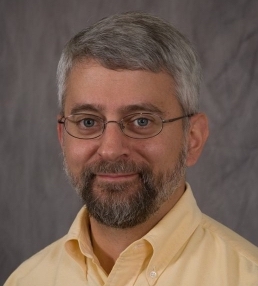
Tom Conte, inaugural director of CRNCH and professor in Georgia Tech’s schools of Computer Science and Electrical and Computer Engineering
Georgia Tech is taking on the challenge of moving computing past the end of Moore’s Law by standing up a new interdisciplinary research center, which is known as CRNCH.
We knew that at some point physics would come into play. We hit that wall around 2005,” said Tom Conte, inaugural director of CRNCH and professor in Georgia Tech’s schools of Computer Science and Electrical and Computer Engineering.
Since the 1960s, Moore’s Law has essentially held that, for a given price point, the number of transistors on an integrated circuit doubles roughly every two years. However, there are hard limits to building smaller integrated circuits because, as transistors get smaller they become less energy efficient. The problem gets worse as the chips get faster.
“We’ve gotten by since 2005 using multiple, slower-clocked cores per chip– ‘multicore processing,’ in essence — but it’s only a partial solution,” said Conte. “Very soon, computing’s historic performance growth rate will no longer be sustainable.”
In fact, according to the Institute of Electrical and Electronics Engineers(IEEE) Rebooting Computing Initiative (of which Conte is a founding member and current co-chair) this inevitability means that wholesale changes are needed in both computing technologies and computer architecture if the next level of high performance supercomputing – machines capable of 10 million trillion floating-point operations per second (10 exaflops) – is to be achieved.
To facilitate these fundamental changes, Conte, along with School of Computational Science and Engineering Chair David Bader, Charlotte B. and Roger C. Warren Chair of Computing Richard DeMillo, Frederick G. Storey Chair in Computing Richard Lipton, Georgia Research Alliance Eminent Scholar and Rhesa “Ray” S. Farmer, Jr. Distinguished Chair in Embedded Computing Systems Marilyn Wolf, and other Georgia Tech faculty proposed the establishment of a new interdisciplinary research center.
This IRC would take the lead in breaking down traditional barriers between computing’s various facets, such as devices, circuits, architecture, software, and algorithms, in order to restart the exponential growth rate embodied in Moore’s Law.
The proposal has come to fruition in the form of CRNCH.
We didn’t want to be a close follower in the space,” said Conte. “By leveraging the broad, interdisciplinary talent that exists here, Georgia Tech is well-poised to become the international leader in novel computing hierarchies. In doing so, we firmly believe Georgia Tech will be the global epicenter of a new computing economy.”
To achieve the bold breakthroughs necessary to propel computing to the exascale level and beyond, CRNCH researchers are evaluating a number of possibilities.
“Several promising research areas have been identified,” said Conte. “However some are more disruptive to the computer stack than others.”
Some of the possible solutions that have been identified by the IEEE Rebooting Computing Initiative for further research include:
- Quantum computing – uses properties of quantum mechanics to solve optimization problems.
- Neuromophic computing – leverages what is known about the human brain to create new technologies.
- Approximate and stochastic computing – complimentary approaches based on the observation that computers often calculate results to higher than required accuracy and precision.
- Adiabatic and reversible computing – recycles unused inputs and utilizes non-traditional devices for substantial power savings
- Cryogenic superconducting – uses low temperature superconducting materials to conserve energy.
The CRNCH team includes experts in each of these focus areas. However, Conte said, “It’s important to note that these general approaches are only a sampling of what may be possible and other approaches and techniques are actively being explored by the team.”
With the team in place and the center open for business, Conte expects CRNCH to quickly take a leading role in researching new computer hierarchies and become recognized as the academic research embodiment IEEE’s rebooting computing initiative.
Within three years we firmly believe that CRNCH will be providing international leadership and have significant influence on the development of new computer hierarchies,” said Conte. “ We also believe that CRNCH will establish Midtown Atlanta as a hotspot for this new computing technology.”



